
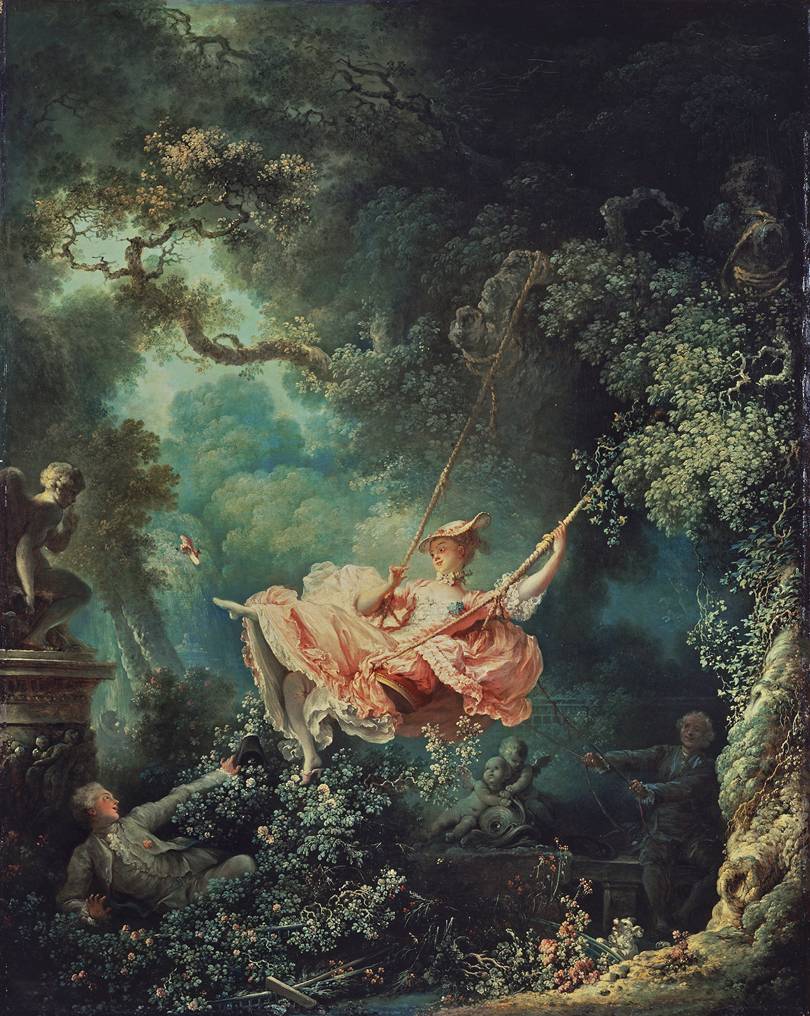
An older man pushes his delectable companion, unaware that her beau sprawls behind the roses, looking up her skirt.
An unidentified “gentleman of the Court” commissioned this painting of his mistress “on a swing that a bishop [Fragonard simply depicted an elderly man] would set in motion. You will place me in a position where I can see the legs of this beautiful child, and even more if you want to further enliven your painting.”1
A Cupid statue owned by Madame de Pompadour, King Louis XV’s influential mistress, emphasizes the theme of forbidden love.
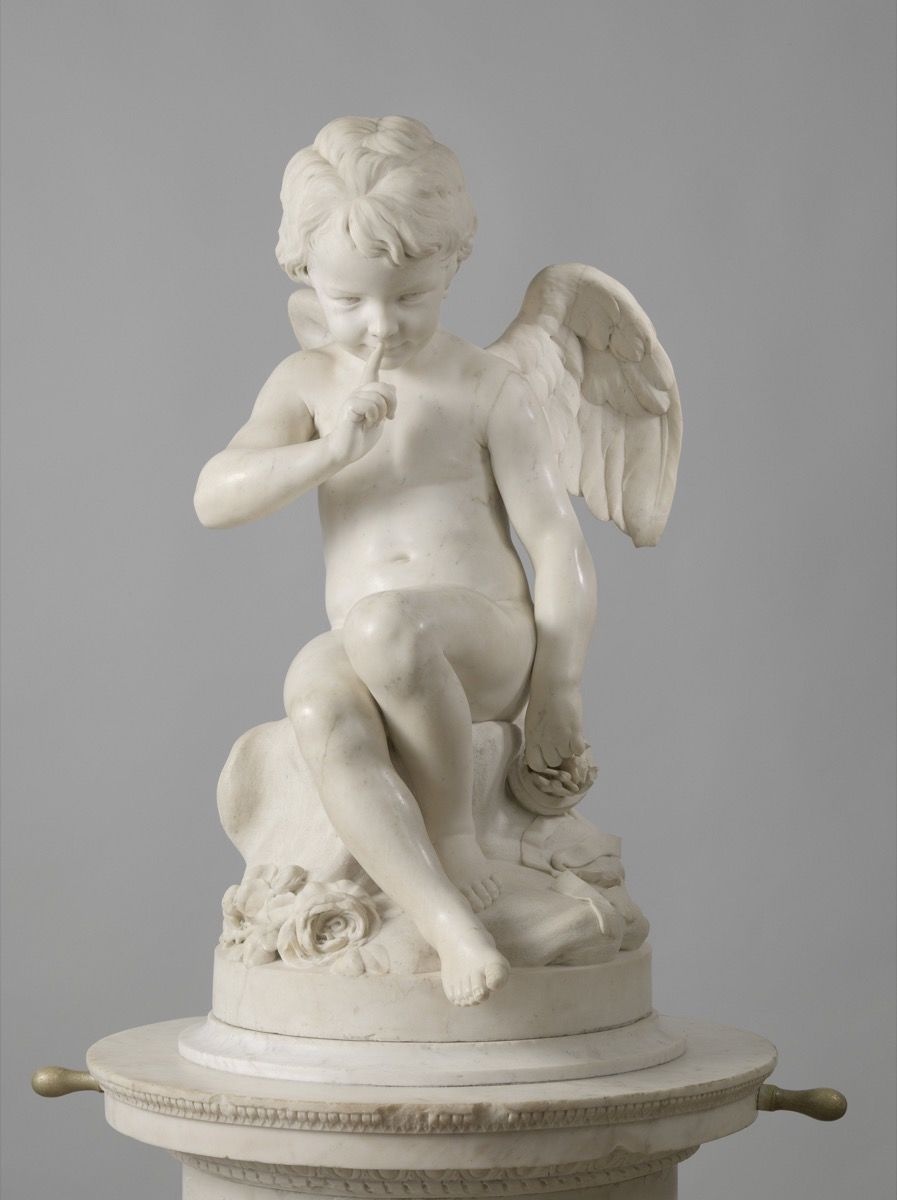
Seated Cupid (1757) by Étienne-Maurice Falconet (Rijksmuseum)
Dogs are traditionally symbols of fidelity. It’s easy to miss this tiny, scandalized pet, loosely painted to blend in with the flowers.
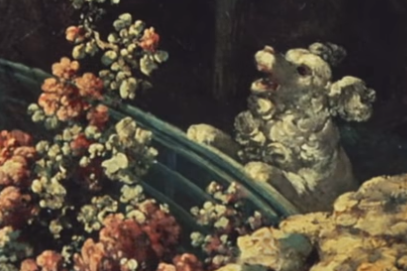
Swings – and paintings of swinging – were popular at this time, in part because women’s “uninhibited positions revealed the body and spectators glimpsed views that were usually hidden from sight.” 2
A 1787 spectator wrote that women on swings “assume a bearing even freer than elsewhere, and the game of the swing permits many entertaining licenses for the spectator, which nevertheless can be attributed to accidental causes.” 3
Fragonard painting at least three swing scenes. A lush landscape dominates this later version.
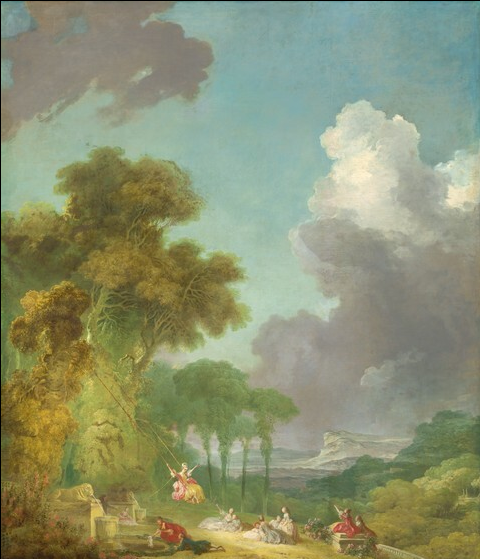
The Swing (1775/80) by Jean-Honoré Fragonard (National Gallery of Art)
But the agitated lapdog appears again.
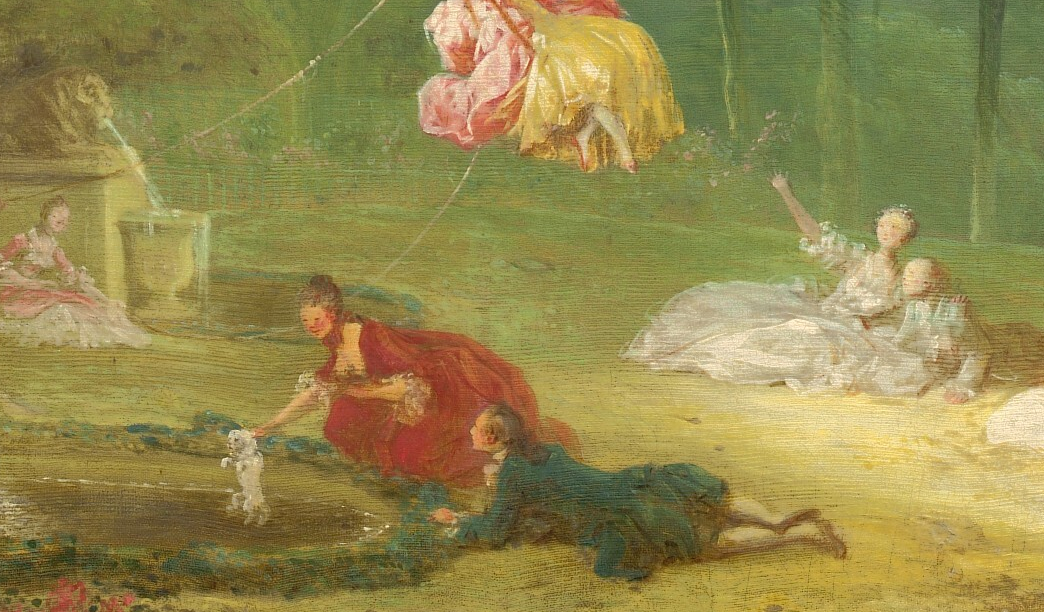
Fragonard may have seen other swing tableaux by his contemporaries. Nicolas Lancet painted several.
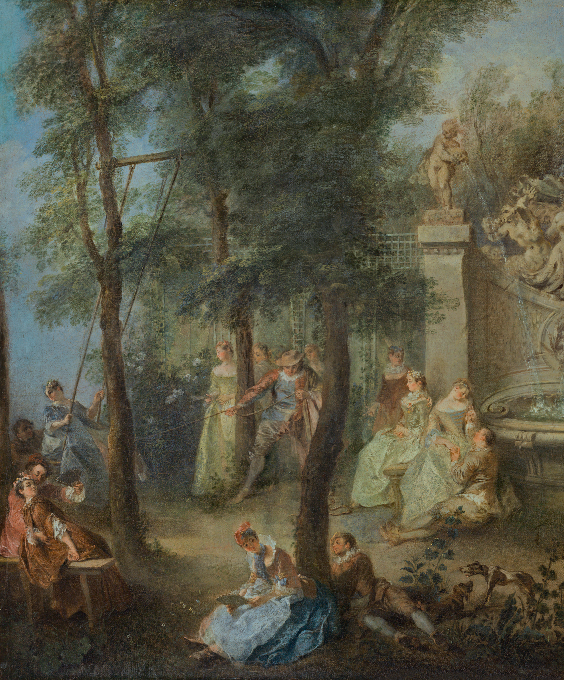
The Swing (1735-40) by Nicolas Lancret
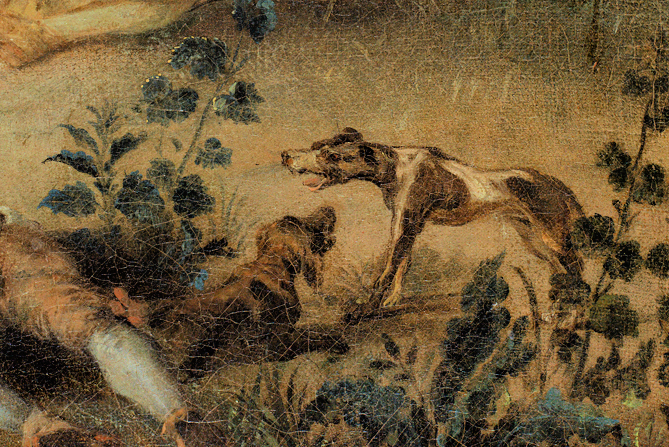
Lancret also added an offended dog.
Pop culture note: Disney’s Frozen includes an homage to The Swing, when Anna leaps in front of the painting while singing.
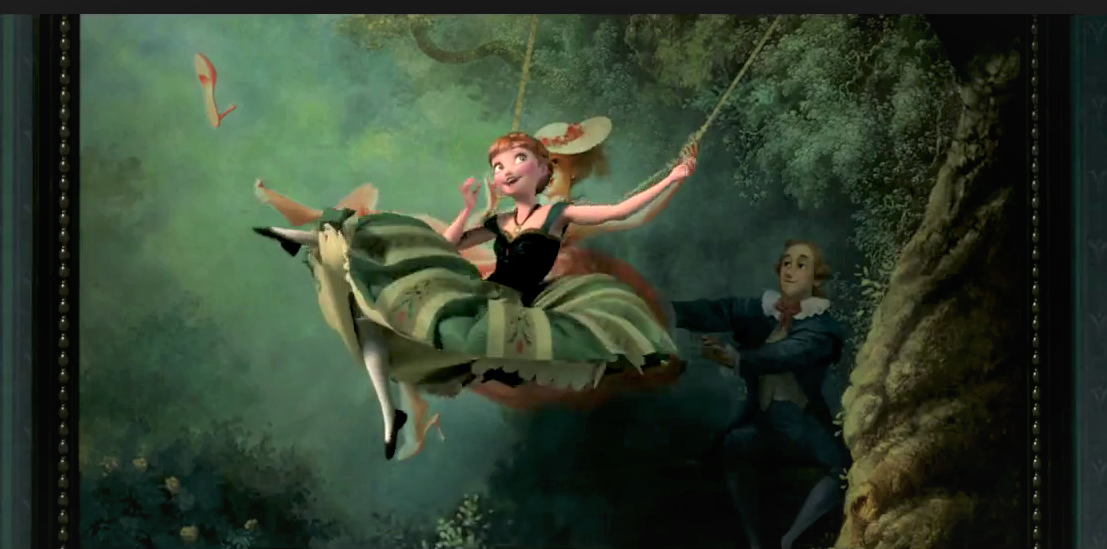
No dog, though.
The Swing (also known as The Happy Hazards (or Accidents) of the Swing, or Les Hasards Heureux de l’Escarpolette)
Artist: Jean-Honoré Fragonard (1732-1806)
Renowned for his exuberant paintings of intimate scenes, lush gardens, and landscapes, Fragonard worked primarily for a private clientele of financiers and courtiers in pre-Revolutionary France. He produced more than 550 paintings, as well as drawings and prints, but faded from view after the Revolution, as tastes changed and fortunes dwindled.
Date: c. 1767
Material & Support: oil on canvas
Size: 81 cm x 64.20 cm ( 2 ft 8 in x 2 ft 1 in)
Location: The Wallace Collection, London
Online Information:
Cohen, Alina, Undressing the Erotic Symbolism in “The Swing,” Fragonard’s Decadent Masterpiece, Artsy.net, Sept. 9, 2019.
Milam, Jennifer, Playful Constructions and Fragonard’s Swinging Scenes, Eighteenth-Century Studies Vol. 33, No. 4 (Summer 2000), pp. 543-559. Accessed via JSTOR.
My Favourite Painting: Stephen Jones, Country Life, March 9, 2015.
Secrets of The Wallace: The Swing by Jean-Honoré Fragonard, YouTube, Dec 27, 2013. (this video shows the painting’s size; smaller than expected!)
Other Information / Sources:
Thullier, Jacques. Fragonard. New York: Rizzoli International, 1987.
Bailey, Colin; Conisbee, Philip; & Gaehtgens, Thomas W. Age of Watteau, Chardin, and Fragonard : Masterpieces of French Genre Painting. New Haven: Yale University Press, 2003.
- Milam, p. 549. “Je désirerois… que vous me peignissiez Madame (en me montrant sa maîtresse) sur une escarpolette qu’un évêque mettrait en branle. Vous me placerez de façon, moi, que je sois à portée de voir les jambes de cette belle enfant, et mieux même si vous voulez égayer d’avantage votre tableau…”
- Milam, p. 545.
- Milam, p. 545.
 SECRET IMAGES
SECRET IMAGES
Leave a Reply